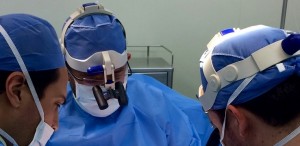DOES SCAPULAR STABILIZATION BENEFIT CHILDREN WITH OBSTETRIC BRACHIAL PLEXUS PALSY?
Fuente
Este artículo es originalmente publicado en:
http://www.ncbi.nlm.nih.gov/pubmed/25191160
http://www.ncbi.nlm.nih.gov/pmc/articles/PMC4152441/
http://link.springer.com/article/10.1007%2Fs11552-014-9640-z
De:
Terzis JK1, Karypidis D2, Mendoza R2, Kokkalis ZT3, Diawara N4.
Hand (N Y). 2014 Sep;9(3):303-14. doi: 10.1007/s11552-014-9640-z.
Todos los derechos reservados para:
© Springer International Publishing AG, Part of Springer Science+Business Media
Abstract
BACKGROUND:
Scapular position and size deficiency is evident in obstetric brachial plexus paralysis (OBPP) patients due to the absence of balanced muscular forces acting on the scapula. Scapula stabilization (SS) procedures aim to restore a balanced musculature and anatomic position and to augment shoulder function and enhance developmental potential.
CONCLUSION:
Dimensional discrepancies and functional outcomes are improved by SS procedures. Maximal results are attained in patients who have undergone both primary and secondary shoulder reconstruction before age 2.
KEYWORDS:
Obstetric brachial plexus paralysis; Scapula stabilization; Scapular bone growth; Secondary shoulder reconstruction; Shoulder function

